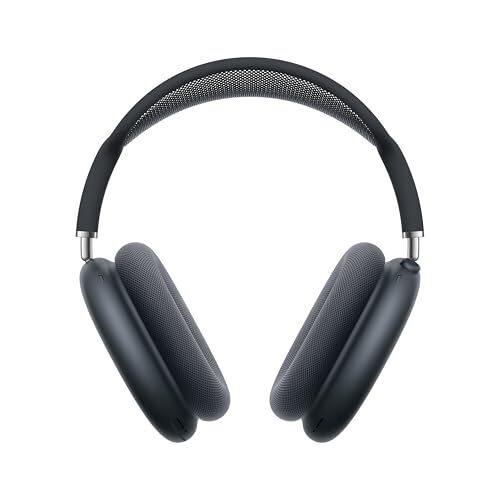Changes in AirPods Max: What’s New and Worth Noting?
Previously, it was highlighted that the “second-generation” AirPods Max offered less value compared to their predecessor. Apple set the price at $549 for headphones that were nearly a carbon copy of the original model released in 2020, with the only difference being the switch from Lightning to USB-C. Even more troubling was the removal of a feature: the USB-C variant was incompatible with the 3.5mm adapter, eliminating the option for wired listening that the Lightning option provided.
Since the original Lightning AirPods Max typically go on sale for about $150 less, advocating for the new, pricier model felt unwarranted unless someone was particularly insistent on using USB-C. That all changed, however, with Apple’s recent announcement. As of the upcoming iOS 18.4 launch next month, alongside macOS Sequoia 15.4, users can look forward to a significant enhancement to the AirPods Max: support for lossless audio and ultra-low latency audio, achievable through wired connectivity over USB-C.
Understanding Lossless Audio vs. Bluetooth Quality
To kick things off, let’s delve into lossless audio. Although the wireless quality of AirPods is commendable, it does come with limitations. Transmitting audio from devices like the iPhone or Mac to AirPods via Bluetooth necessitates compression of the audio files. Despite advancements in compression technology since the era of MP3s, some data is invariably lost. Most listeners may not pick up on this, especially with high-quality wireless headphones, but a direct comparison between a lossy codec such as AAC (the codec used for Apple’s Bluetooth streaming) and ALAC (Apple Lossless Audio Codec) on top-tier headphones could reveal differences in sound quality.
The AirPods Max will support ALAC streaming and downloads through a USB-C connection. Users can seamlessly connect them to Mac, iPhone, or iPad and enjoy music without any data loss. However, it’s crucial to remember that lossless audio files are significantly larger than the compacted versions previously used, so plan accordingly when downloading or streaming substantial amounts of high-quality music.
Apple Aims to Attract Music Professionals with AirPods Max
Another notable upgrade is the introduction of ultra-low latency audio. Wireless headphones have historically faced issues in applications requiring real-time audio precision due to latency—the delay in audio transmission from the source to the output. This delay is minimal for casual activities like music streaming, watching videos, or listening to audiobooks, making it an inconsequential issue for most users.
However, for professional musicians, this latency is untenable. Imagine recording a track while relying on live feedback through wireless headphones—a frustrating experience.
With the AirPods Max’s USB-C compatibility allowing a wired connection, this limitation is being addressed. With the rollout of iOS 18.4, users can connect their AirPods Max directly to a device via USB-C and enjoy ultra-low latency audio. Apple even emphasizes that this is the only headphone model that provides musicians with the capability to create and mix music with the benefits of Personalized Spatial Audio, which includes head tracking features. While this capability might not be appealing to everyone, it has the potential to transform the creative process for artists.
Furthermore, the reduction in latency will also enhance experiences for gamers and streamers. Apple claims a completely responsive experience, which matches the quality of sound from the built-in speakers of Apple devices such as iPhones, iPads, or Macs.
Original AirPods Max Users Left Behind
For those who already own the original AirPods Max, these latest advancements may not apply. Regrettably, features like lossless wired playback and ultra-low latency audio are exclusive to the USB-C models, despite the original AirPods Max being compatible with wired playback via a 3.5mm to Lightning adapter.
Apple has not clarified the reasoning behind this limitation—there may be technical constraints between Lightning and USB-C. It might also serve to position the latest AirPods Max variants more distinctively in terms of features, as the two versions have minimal differences aside from the connector type and color choices. This allows Apple to present the new features as exclusive selling points for the updated model.
For audiophiles invested in the Apple ecosystem, there are certainly compelling reasons to consider upgrading to the new iteration. The support for lossless audio is undeniably advantageous, especially for those with a collection of lossless audio files. Additionally, if there are needs related to music creation, the new model holds even greater appeal.
However, aside from these considerations, it’s advisable to weigh the pricing between the Lightning and USB-C models. Retailers are increasingly offering discounts on the newer model, but if a great deal on the original model appears, it is worth contemplating that offer. Those who aren’t concerned with USB-C compatibility or the latest audio enhancements will find that the first iteration of the headphones still delivers exceptional performance, particularly if purchased at a reduced price.













